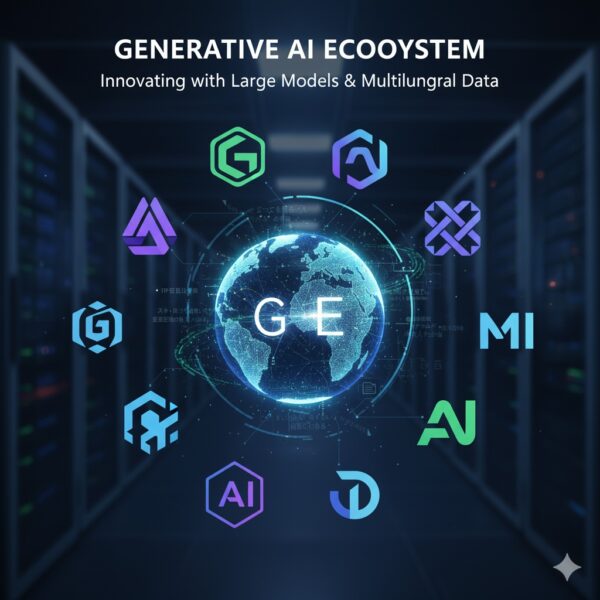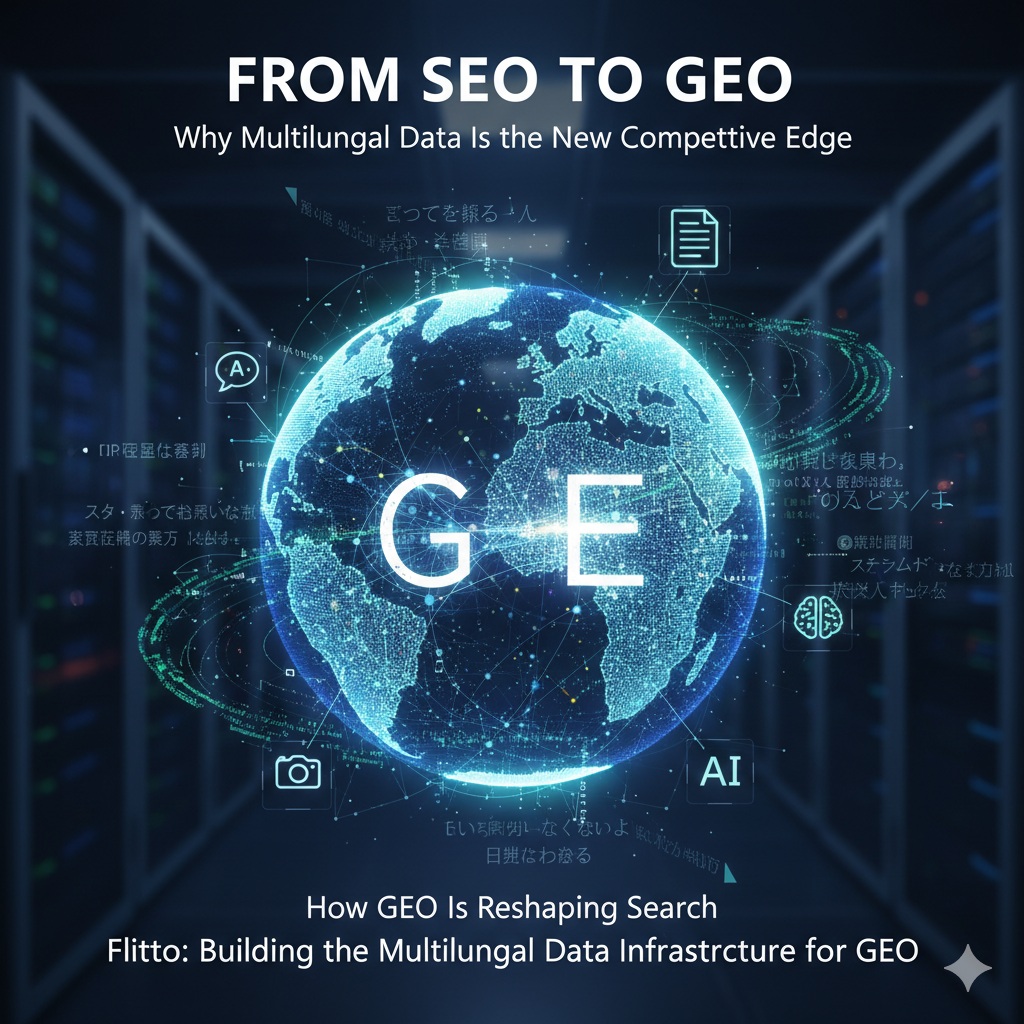How GEO Is Reshaping Search
For more than two decades, businesses have invested heavily in Search Engine Optimization (SEO), mastering the art of keywords, backlinks, and ranking algorithms to secure visibility on Google and other major platforms. But the landscape has shifted dramatically. With the rise of generative AI systems, the search journey no longer ends with a list of links. It ends with an AI-generated answer. This transformation has given birth to a new paradigm: Generative Engine Optimization (GEO).
The essence of GEO is not about convincing a search engine to list your page. It is about ensuring that AI models reference your data when producing answers. Instead of optimizing for placement on a search results page, organizations must now optimize for inclusion within the training and inference pipelines of large language models. This subtle shift carries profound implications. If your data is missing from the sources that models draw upon, your brand, expertise, or even your language may effectively vanish from the digital conversation.
Yet the challenge is not evenly distributed. Recent research from Stanford University shows that large language models perform relatively well in English but significantly worse in non-English languages such as Korean, Japanese, Spanish, and many African languages. (Click for the link) The consequence is a widening “language divide,” where users in non-English regions receive shallow, error-prone, or culturally irrelevant answers. Considering that more than 70% of the global population are non-English speakers, this imbalance risks creating a new form of digital exclusion—an exclusion not of access, but of representation and voice.
GEO and the Core of Data: Multilingual Quality at Scale

At its core, GEO is not a marketing technique. It is a data infrastructure challenge. The success of generative AI models depends not on clever prompt engineering or content placement alone but on the diversity, quality, and relevance of the underlying datasets. In this sense, GEO pushes us to recognize that the true currency of visibility in the AI era is not advertising spend or keyword ranking but multilingual, high-quality data pipelines.
When such data is lacking, the consequences ripple across industries. Translation errors compound when models misinterpret idiomatic phrases or domain-specific terminology. Generic answers, divorced from cultural nuance, frustrate users and erode trust. Products and services fail to localize, leading to poor adoption in new markets. Most dangerously, brands may fall into what we call a “data blind spot“. It is a situation in which their name, expertise, or reputation is invisible to AI systems, leaving competitors or misinformation to fill the vacuum.
Thus, GEO is fundamentally about more than optimizing discoverability. It is about embedding your organization, your knowledge, and your community into the very fabric of the datasets that generative models rely on. The question is no longer how to reach the first page of Google; it is how to ensure that your data becomes part of the global knowledge base of AI.
The Strategic Value of Multilingual Data
Recognizing this, we must ask: what makes multilingual data strategically valuable? At the user level, the answer is simple yet profound: people trust information in their native language. When AI systems deliver inaccurate or awkward responses in non-English languages, users feel alienated. The quality of the answer in their mother tongue directly shapes their perception of credibility and usability.
From the enterprise perspective, multilingual data defines success in global markets. A company expanding into Europe, Asia, or Africa will find that its GEO performance hinges on whether its products, brand information, and user interactions are represented in the datasets that LLMs use. High-value datasets, whether they involve low-resource languages, child speech samples, or regional dialects, become critical differentiators. These are not commodities; they are assets that directly impact how AI perceives and reproduces the identity of a brand in global conversations.
For the AI industry at large, the implications extend even further. As we move toward Physical AI, encompassing robotics, IoT devices, and autonomous systems, the demand for multilingual speech and multimodal data will surge. Machines operating in human environments must not only interpret commands in multiple languages but also respond with accuracy and empathy. Meanwhile, the rise of Sovereign AI, where governments invest in national AI infrastructures, underscores the importance of securing domestic language data as a matter of sovereignty and competitiveness. In short, multilingual data is not just a business asset; it is a cultural, economic, and geopolitical resource.
Flitto: Building the Multilingual Data Infrastructure for GEO
In this evolving landscape, Flitto stands as a critical enabler of GEO success. With over 14 million contributors across 173 countries and coverage of 42 languages, Flitto has built one of the most diverse and scalable multilingual data ecosystems in the world. Our offerings span the full spectrum of modalities, text, speech, OCR, parallel corpora, RLHF datasets, and multimodal content, providing enterprises and researchers with the breadth and depth necessary to optimize for GEO and beyond.
Equally important is our commitment to precision and reliability. Flitto operates a 99.8% quality verification pipeline, ensuring that every dataset is not only large but also clean, accurate, and ready for enterprise use. In comparison, while Appen offers massive scale, its responsiveness and linguistic diversity remain limited. CrowdWorks has regional dominance in Japan but struggles to expand globally. Flitto uniquely combines real-time data generation, true multilingual diversity, and worldwide coverage—a combination that makes us not just another dataset provider but a strategic partner in building the data infrastructure of the GEO era.
Insights for Data Leaders and Global AI Teams
The implications for data stakeholders are clear:
For policymakers and public institutions, the availability of multilingual datasets is foundational for trustworthy AI. Applications in education, healthcare, and public services demand accuracy in local languages. In the context of Sovereign AI, securing national language datasets is no less than a strategic priority for cultural preservation and technological independence.
For researchers and AI developers, Flitto datasets provide the raw material to overcome performance gaps in non-English contexts. They do not merely support GEO strategies but directly improve model generalization, robustness, and fairness.
For enterprises and global brands, multilingual data defines whether a company will be visible, trusted, and competitive in overseas markets. GEO is not an optional tactic; it is a determinant of market share in regions where English is not the default.
In the GEO Era, Multilingual Data Is Competitiveness
The emergence of GEO marks a decisive turning point. We are moving from an era where visibility depended on search algorithms to one where data inclusion determines global presence. English alone cannot sustain a truly international AI ecosystem. Without proactive investment in multilingual data infrastructure, organizations risk irrelevance in the digital dialogues that increasingly shape markets, cultures, and policies.
Flitto’s mission is to close this gap. By delivering multilingual data at scale, with verified quality and real-time responsiveness, we help enterprises, researchers, and governments ensure that their voices are not only heard but also trusted in the age of generative AI.
In this new reality, GEO is more than optimization. It is a battle for representation. And the organizations that recognize multilingual data as the foundation of their competitiveness will be the ones that lead the conversation, shape user trust, and secure global relevance in the years ahead.
